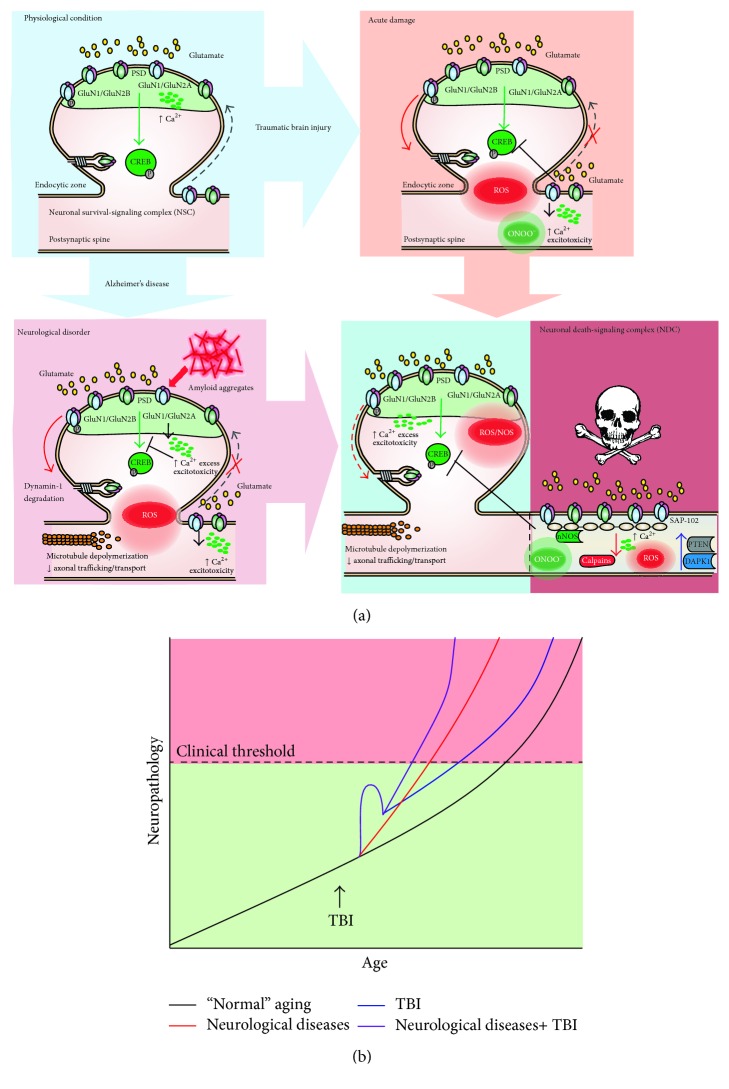Figure 2.
Dysregulation of NMDARs performance in neuropsychiatric disorders and in acute damage. (a) Schematic of the role of NMDARs in TBI and neurodegenerative disease. Under physiological conditions, synaptic NMDARs are activated as well as antiapoptotic cell pathways preventing excitotoxicity by targeting CREB. After acute damage, including TBI, there is a decrease in CREB activation, increased activation of extrasynaptic NMDARs, and ROS/NOS generation. In neurological disorders such as AD, there are alterations in cell signaling due to misfolding proteins, microtubule depolymerization, excessive Ca2+ influx, ROS generation, and excitotoxicity. The cell death mechanisms associated with glutamatergic transmission include calpains, PTEN, and DAPK1. (b) Hypothesized interaction between TBI, neurological diseases, and “normal” aging. The progression curves show the age of patients at disease onset and the severity of neurological symptoms. The black line shows the progression of neurodegeneration in normal aging and the red line shows the acceleration of neurodegeneration that occurs in diseases such as AD. This neurodegeneration includes neuroinflammation, oxidative stress markers accumulation, and the aggregation of misfolded proteins. This neurodegeneration can be accelerated after TBI both in “normal aging” (blue line) and in patients with neurodegenerative disease (purple line).

